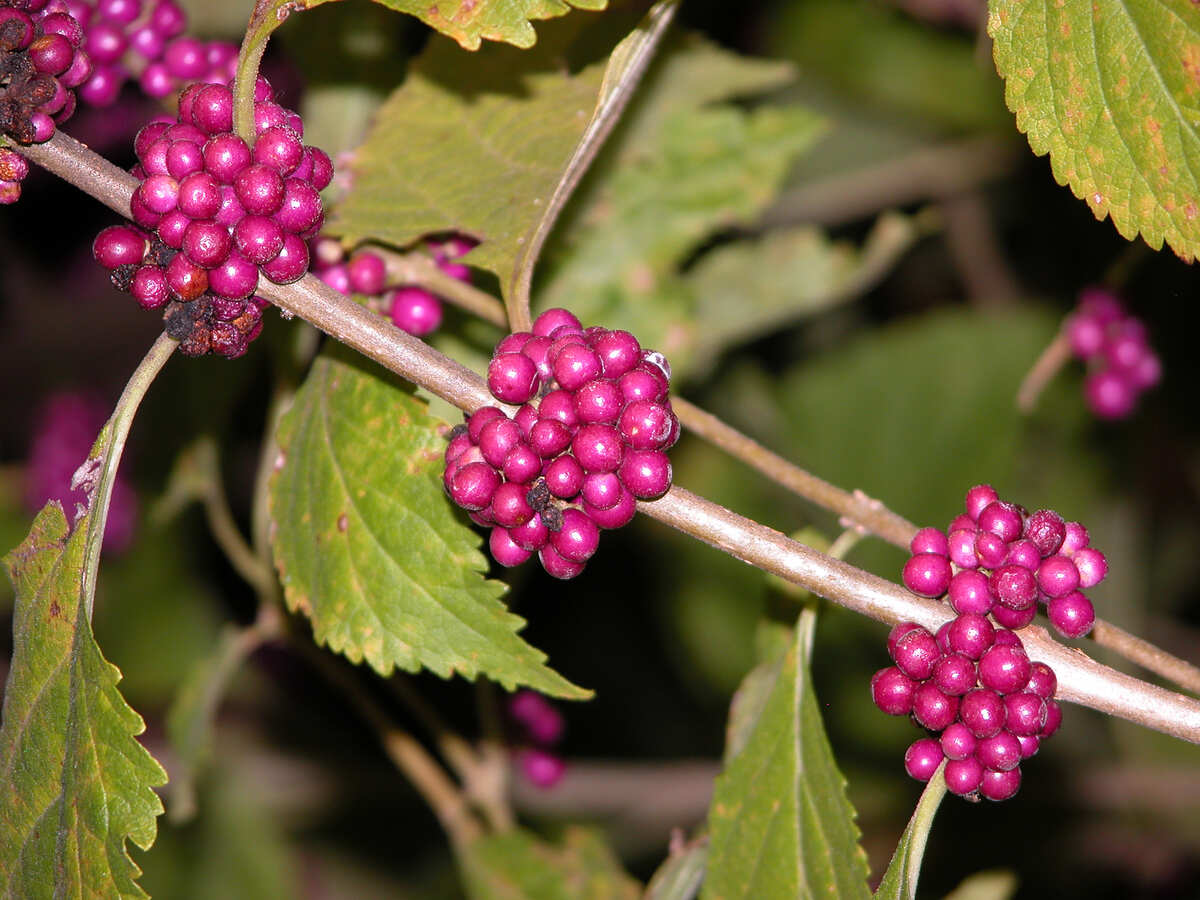
South Carolina is full of beautiful native plants, including aster and milkweed, that are not only eye-catching but also important for maintaining the state’s ecosystem. So, read on to learn more about the 14 best native plants for South Carolina.
Best South Carolina Native Plants for Your Lawn
South Carolina’s native plants have been growing in the region for thousands of years and can give your landscape a touch of beauty, like your own small piece of Congaree National Park.
They were discovered by the Catawba and then European settlers but are now being rediscovered as people realize these plants are able to thrive in their South Carolina landscapes successfully.
Out of all the native plants growing here in the Palmetto State, these are the best:
1. Carolina Jessamine (Gelsemium sempervirens)
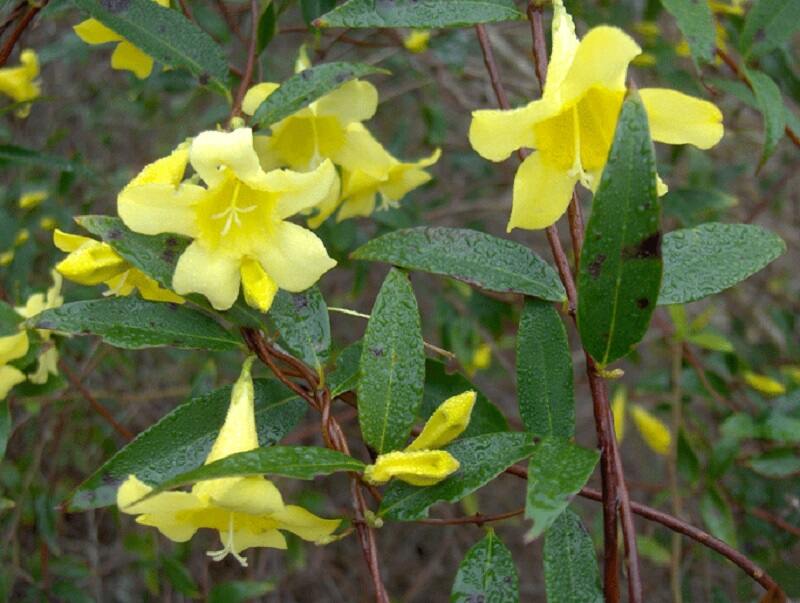
South Carolina’s state flower, Carolina jessamine is known as the “herald of spring” because it blooms so early in the year. A vine with shiny dark green leaves and bright yellow trumpet-shaped flowers, it is the perfect plant to grow along fences and arbors.
Since the colonial days, the root has been used as a home remedy for migraine, fever, bronchitis, whooping cough, neuralgia, rheumatism, and ovarian and uterine pain, among other things. However, there is no scientific support for this, and the plant becomes toxic to both animals and people when too much is ingested.
- Plant type: Vine
- USDA Hardiness Zone: 7 to 10
- Sun: Full sun to partial shade
- Soil: Clay, sand, loam, acidic, well-drained
- Duration: Perennial
- Fragrance: A sweet scent that is used for perfume
- Bloom time: February through April
- Water needs: Medium
- Mature height: 10 to 20 feet
- Potential Hazards: In addition to the plant’s toxicity, its stands are highly flammable.
- Maintenance Needs: Low
2. Coral Honeysuckle (Lonicera sempervirens)
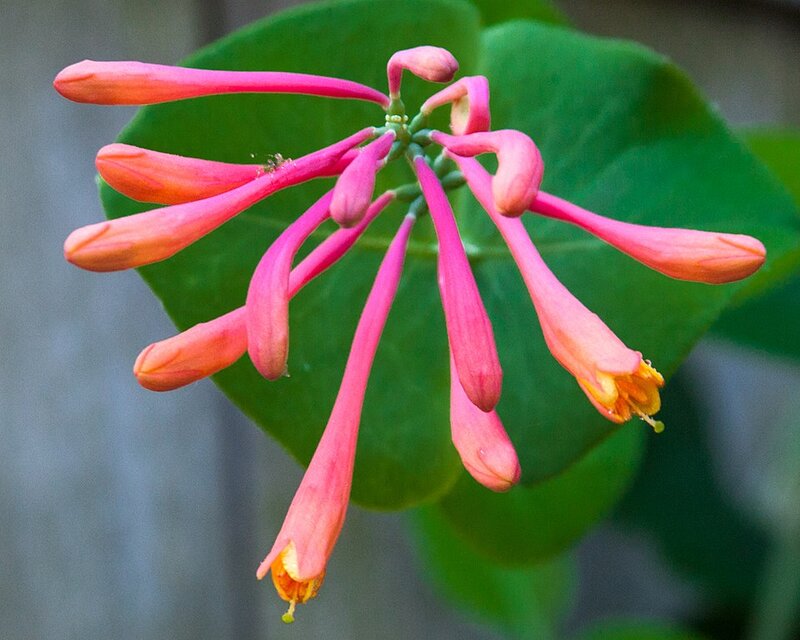
Coral honeysuckle has clusters of long, tubular bright red flowers that stand out against its smooth, glossy leaves. This South Carolina native needs light, airflow, and plenty of drainage in your yard to thrive. It can tolerate poor drainage for short periods of time but will eventually contract powdery mildew if left wet for too long.
This twining vine plant works as either a climber or a groundcover and is a favorite among hummingbirds, butterflies, and bumblebees, so it is a perfect choice if you’re planting a pollinator garden. In fact, coral honeysuckle is perfect for birdwatchers since its red berries also attract quail, finches, thrushes, and robins.
- Plant type: Vine
- Hardiness zones: 4 to 9
- Sun: Full sun to partial shade
- Soil: Clay, sand, loam, slightly acidic, well-drained. It acclimates to many soil types.
- Duration: Semi-evergreen perennial
- Fragrance: None
- Bloom Time: March through May
- Water Needs: Medium
- Mature Height: 15 to 20 feet
- Potential Hazards: Slightly poisonous. Do not consume.
- Maintenance Needs: Low
3. Beebalm (Monarda didyma)
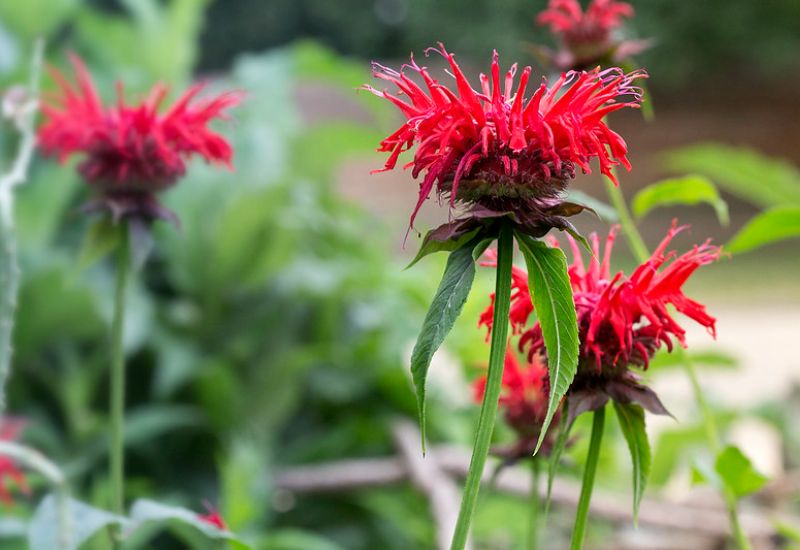
Beebalm was named by Native Americans, who used it to season food and as a medicine to soothe bee stings (hence the name). It has a few other names, such as “horsemint” and “bergamot.”
Bee balm’s fragrant, colorful flowers bloom in scarlet, pink, and purple. It is an attractive plant for bumblebees, butterflies, and hummingbirds. Though it can tolerate some shade, it thrives in moist, well-drained soil and full sun. Bee balm can grow up to 4 feet tall and spreads rapidly.
- Plant type: Herbaceous perennial
- USDA Hardiness Zone: 4 to 9
- Sun: Full sun to partial shade
- Soil: Chalk, clay, loam, sand
- Duration: Perennial
- Fragrance: Minty aroma when leaves are crushed
- Bloom time: May to June
- Water needs: Average
- Mature height: 2 to 4 feet
- Potential Hazards: Vulnerable to powdery mildew.
- Maintenance Needs: Low
4. Butterfly Milkweed (Asclepias tuberosa)
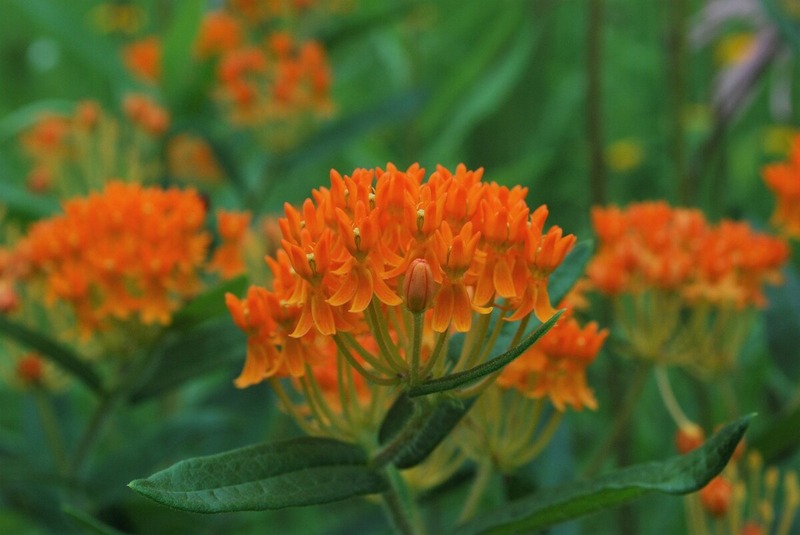
Butterfly milkweed is an important plant in South Carolina with a rich history.
Native Americans used its fibers to make ropes and to weave into clothing. They also used it for food. European settlers used its leaves to make a tea to treat chest inflammation, and called the plant “pleurisy root.” It was listed in the American Pharmacopoeia and the National Formulary until 1936.
Butterfly milkweed has straight, hairy stems and produces flat or rounded clusters of many small individual flowers. Unlike other plants from the milkweed species, butterfly milkweed does not create a thick, milky sap, but instead a watery, translucent sap. The fruit of butterfly milkweed is a pod full of tufted seeds that are spread by floating on the breeze.
- Plant type: Herbaceous perennial
- USDA Hardiness Zone: 3 to 9
- Sun: Full sun
- Soil: Clay, loam, sand
- Duration: Perennial
- Fragrance: Vanilla
- Bloom time: June to August
- Water needs: Low
- Mature height: 1 to 2 feet
- Potential Hazards: Toxic to dogs, cats, and horses
- Maintenance Needs: Low
5. Late Purple Aster (Symphyotrichum patens)
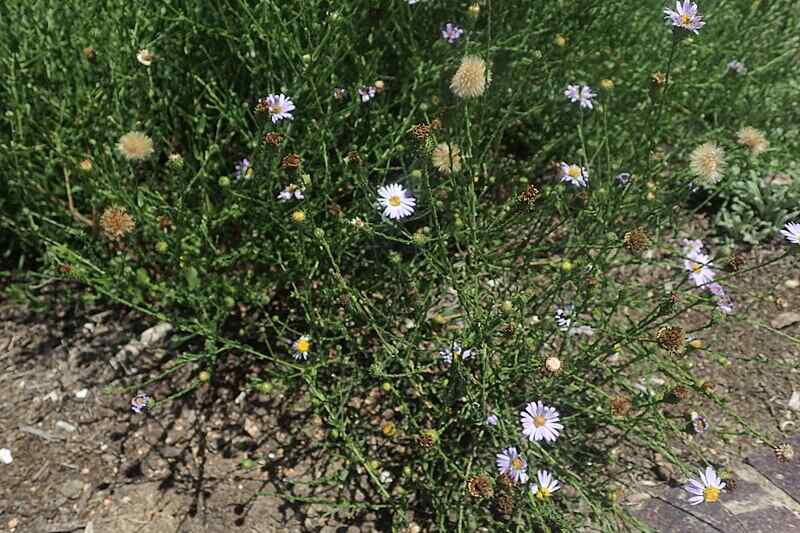
Anyone who has driven through South Carolina has seen these plants with their long, thin, purple flowers. The stems of this plant grow up to 3 feet tall, and the blooms appear in late summer and disappear in early fall.
The flower’s nectar attracts pollinators, and the plant is drought- and salt-tolerant.
If you grow it in your yard, be sure to keep it in soil with good drainage. Poor airflow and drainage can cause powdery mildew and aster wilt.
- Plant Type: Herbaceous perennial
- USDA Hardiness Zone: 4 to 8
- Sun: Full sun
- Soil: Sandy to shallow rocky
- Duration: Perennial
- Fragrance: None
- Bloom Time: September to October
- Water Needs: Moderate
- Mature Height: 3 feet
- Potential Hazards: None
- Maintenance: Low
6. Purple Coneflower (Echinacea purpurea)
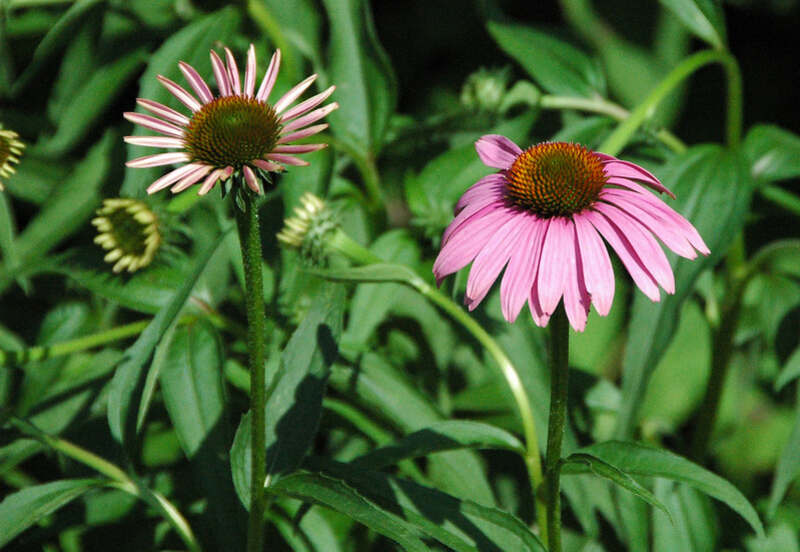
Purple coneflower is not only colorful but also attracts bees, butterflies, and hummingbirds to your yard. Some people use it as an herbal remedy for preventing and treating coughs and colds.
Purple coneflower has long, smooth stems and long, drooping lavender petals attached to a spiny center. Its scientific name comes from the Greek word echinos, which means hedgehog.
- Plant type: Herbaceous perennial
- USDA Hardiness Zone: 3 to 8
- Sun: Full sun to partial shade
- Soil: Well-drained, sandy, and rich soil
- Duration: Perennial
- Fragrance: Light, sweet, honey-like
- Bloom time: Middle of summer and continues off and on until frost
- Water needs: Medium
- Mature height: 2 to 5 feet
- Potential Hazards: None
- Maintenance Needs: Low
7. Swamp Sunflower (Helianthus angustifolius)
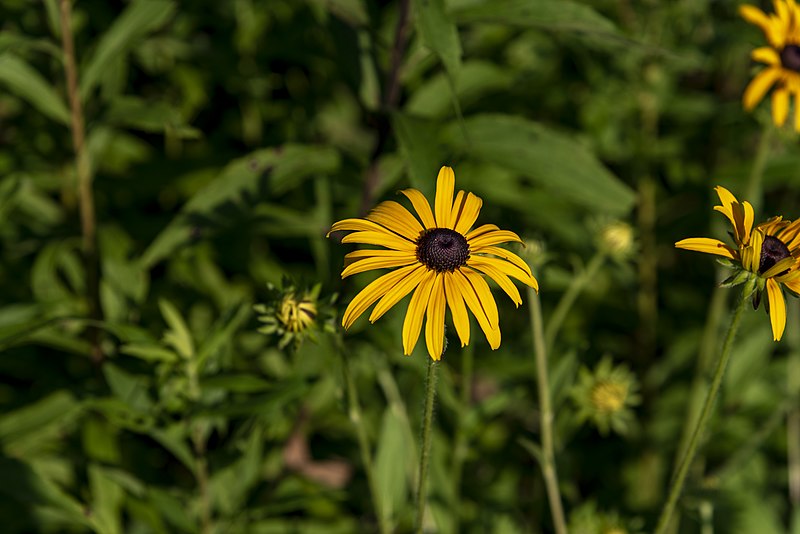
The name gives it away: This is a plant that thrives in wet soil. Its bright yellow daisy-like flowers stand out in the swamps for which South Carolina is famous. When it isn’t in a swamp, it is known as narrow-leaved coreopsis or sunflower. In a swamp or not, it attracts songbirds and other pollinators.
The leaves are narrow, hairy, and pointed at the tip. Swamp sunflowers can grow up to 8 feet tall and can be a bit flimsy, needing to be staked for security. They need plenty of room to spread and do well in moist soils. They can be vulnerable to caterpillars and diseases such as rust and powdery mildew.
- Plant Type: Herbaceous perennial
- USDA Hardiness Zone: 5 to 9
- Sun: Full or partial sun
- Soil: Clay, loamy, or sandy soil
- Duration: Perennial
- Fragrance: Delicate, vegetal
- Bloom Time: Late summer to early fall
- Water Needs: Moderate to high
- Mature Height: 5 to 8 feet
- Potential Hazards: None
- Maintenance Needs: Low
8. Yellow Indiangrass (Sorghastrum nutans)
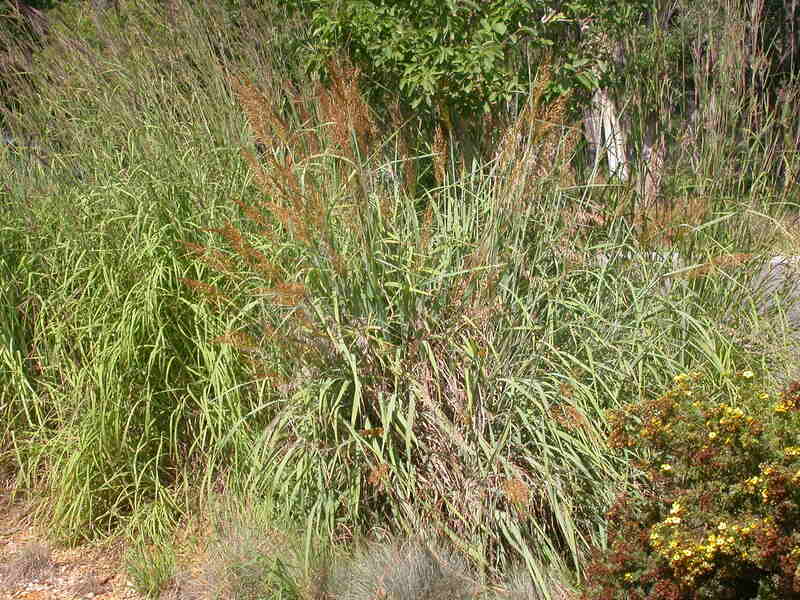
Yellow indiangrass is the South Carolina state grass. It is tall and has broad blades with soft golden-brown seed head plumes. The flowering parts of the plant have a metallic sheen, with either a gold or purple coloration. It is a favorite among livestock and is native to prairies, open woods, and fields.
Like most native grasses, Sorghastrum nutans is drought-resistant and easy to grow. Songbirds and game birds love to nest in it and eat the seeds. However, it is dangerously vulnerable to fire, so you might want to find a less flammable ornamental grass for your home landscape.
If you’re interested in turfgrass instead of ornamental grass in your yard, check out our guide on the best grass seeds for South Carolina.
- Plant Type: Grass
- USDA Hardiness Zone: 4 to 9
- Sun: Full sun to full shade
- Soil: Moist, sandy, loamy, and clay soils
- Duration: Perennial
- Fragrance: None
- Bloom Time: August to October
- Water Needs: Dry to moist
- Mature Height: 5 to 7 feet
- Potential Hazards: Very flammable.
- Maintenance Needs: Low
9. Sweetgrass (Muhlenbergia sericea)
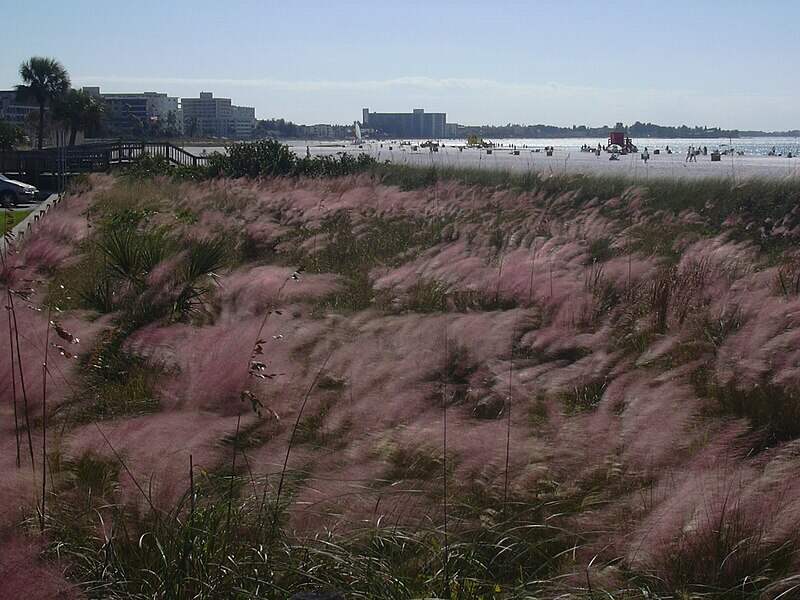
Sweetgrass is an ornamental grass that grows in tall clumps with tufted purple foliage. It is often found along dunes and barrier islands and is tolerant of salty and wet soils. It’s attractive to butterflies and songbirds since it offers shelter for nesting sites.
Sweetgrass has a great deal of historical significance in South Carolina, especially with the Gullah community, who have used it to weave baskets that are prized for their artistry and excellence.
These days, it is becoming popular among professional landscapers, especially for parks. Among other things, it can withstand “wet feet” (a sudden saturation of water that can suffocate roots).
- Plant Type: Grass
- USDA Hardiness Zone: 7 to 11
- Sun: Full sun
- Soil: Sandy and moist
- Duration: Perennial
- Fragrance: None
- Bloom Time: Fall
- Water Needs: Moderate to high
- Mature Height: 5 to 8 feet
- Potential Hazards: None
- Maintenance Needs: Low
10. Christmas Fern (Polystichum acrostichoides)
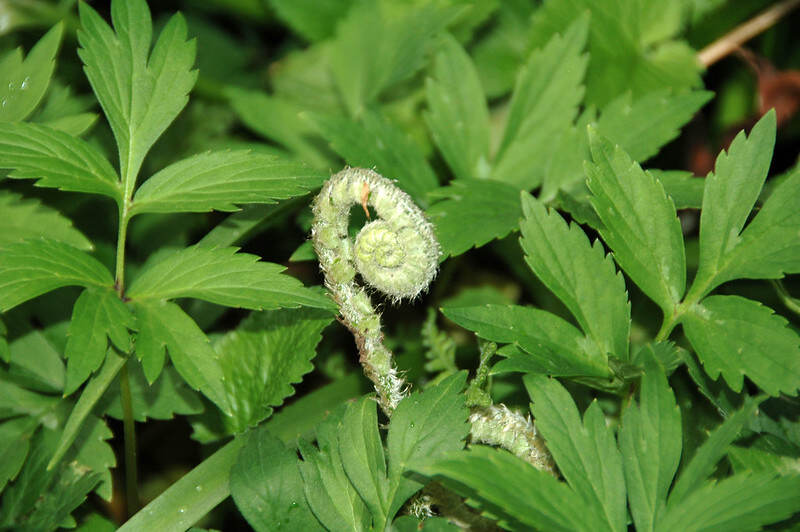
A beautiful evergreen fern that remains green throughout the winter holidays, earning its name as “Christmas fern.” When a killing frost hits, the Christmas fern will lie down, preserving the top layer of the ground below.
The glossy, dark green fronds usually grow in a single clump instead of spreading out as a ground cover. It is easy to establish and needs only cool, moist, well-drained soil in a shady area to grow. It gets stressed in too much sun and cannot tolerate clay soils.
- Plant type: Fern
- USDA Hardiness Zone: 3 to 9
- Sun: Partial shade to full shade
- Soil: Cool, moist, well-drained
- Duration: Perennial
- Fragrance: No fragrance
- Bloom time: Not a flowering plant
- Water needs: Low to Medium
- Mature height: 1-2 feet
- Potential Hazards: None. Can get crown rot.
- Maintenance Needs: Low
11. Eastern Red Cedar (Juniperus virginiana)
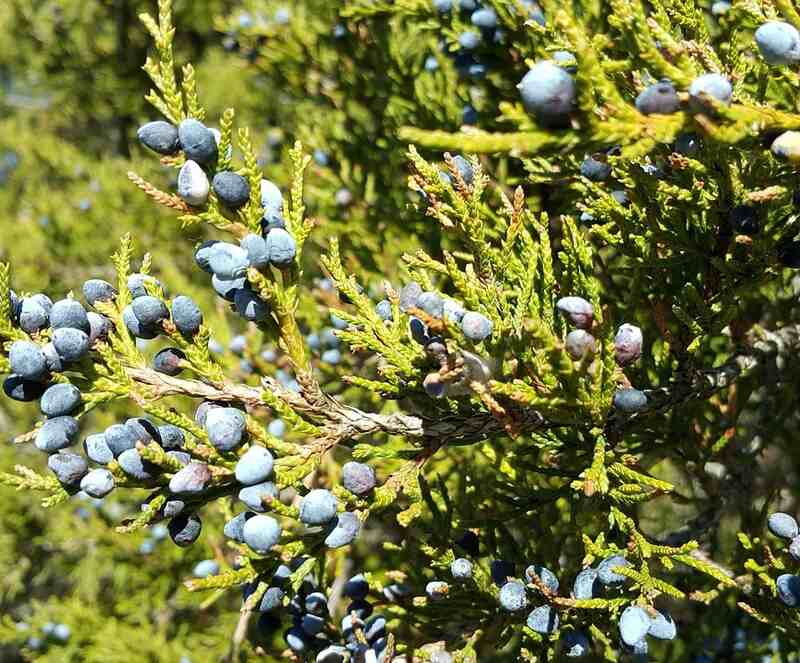
The very first European settlers found this tree, with the colonists at Roanoke Island in 1564 using it to build cabins and furniture. It usually grows 30 to 40 feet, and its colors range from light green to dark green and gray-green to blue-green. It is known for its fragrant aroma, which is described as “cedar-chest smell.”
When young, the branches form a round pyramid, eventually becoming more varied and irregular as they age. Eastern red cedar is resistant to drought and cold. It’s often used for Christmas trees, and its fruit is a favorite among many native birds. The berries and leaves can be used to make a medicinal tea, but great quantities will cause stomach upset.
Keep in mind that these trees are vulnerable to a fungal disease known as cedar-apple rust, and for that reason must be kept away from apple orchards.
- Plant type: Tree
- USDA Hardiness Zone: 2 to 9
- Sun: Full sun to partial shade
- Soil: Dry or moist soils; sandy, loam, clay, rocky, silt, and limestone-based
- Duration: Perennial
- Fragrance: Earthy
- Bloom time: No flowers, but cones that can be seen from September to February
- Water needs: Low to Medium
- Mature height: 30 to 40 feet most of the time; can grow to 90 feet
- Potential Hazards: Mildly toxic if eaten; highly flammable
- Maintenance Needs: Low
12. American Beautyberry (Callicarpa americana)
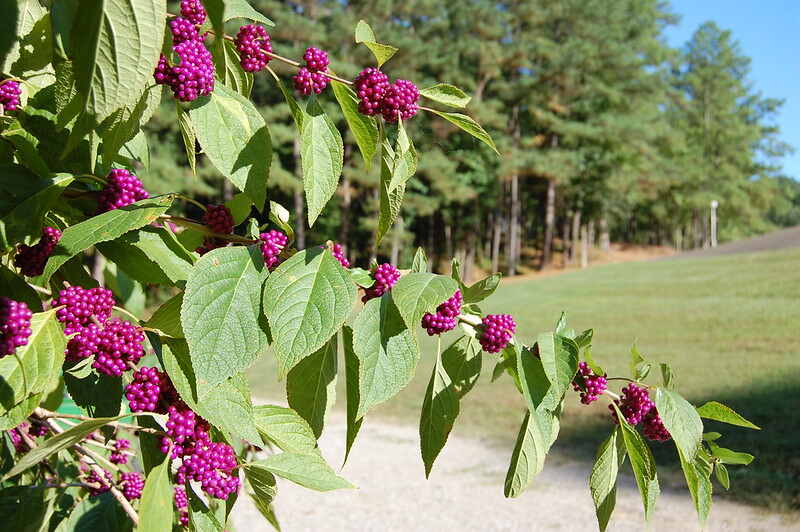
Beautyberry lives up to its name with bold purple berries that grow in clusters during the fall. Not only are they pretty to look at, but they are a popular food source for birds, deer, and other wildlife. It’s the perfect plant if you’re interested in creating a certified wildlife habitat.
It can be found in woodlands, open meadows, and along ponds and streams, preferring full sun or partial shade.
Beautyberry has clusters of small flowers during late spring and early summer and berries from August to October. The saw-toothed green leaves form on arching stems and are hairy with a pointed tip. The leaves allegedly repel ticks, fire ants, and mosquitos when crushed.
- Plant type: Shrub
- USDA Hardiness Zone: 6 to 10
- Sun: Full sun to partial shade
- Soil: Loam, sand, moist, good drainage
- Duration: Deciduous perennial
- Fragrance: Citrus
- Bloom time: Summer
- Water needs: Low
- Mature height: 3-8 feet
- Potential Hazards: None
- Maintenance Needs: Low
13. Oakleaf Hydrangea (Hydrangea quercifolia)
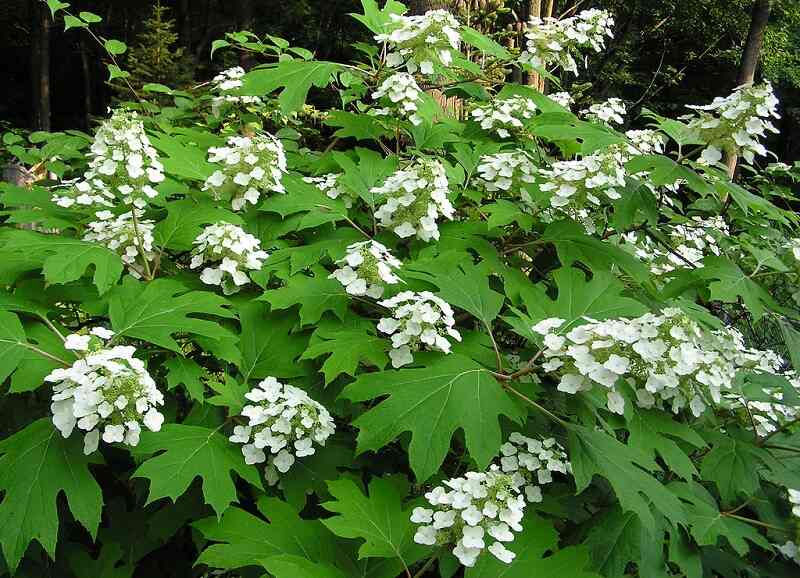
The oakleaf hydrangea’s leaves put on a show in the fall, turning from green to deep red. It is an upright shrub with multiple stems that can reach 8 feet in height. In late spring, oakleaf hydrangea sprouts showy white flowers that form pyramid-shaped clusters up to a foot long, making it a colorful selection for a plant list.
It thrives in rich, well-drained soils with full sun or partial shade and is attractive to butterflies, songbirds, and other wildlife, making it perfect for pollinator gardens. It can be susceptible to aphids, spider mites, and powdery mildew.
- Plant type: Shrub
- USDA Hardiness Zone: 5 to 9
- Sun: Full sun to partial shade
- Soil: Fertile, moist, well-drained
- Duration: Perennial
- Fragrance: Honey-vanilla
- Bloom time: Flowers start in late spring, around May, and turn brown in fall
- Water needs: At least 1 inch a week
- Mature height: 6 to 8 feet
- Potential Hazards: They resist pests but sometimes get spiders or aphids, and they are susceptible to leaf blight or powdery mildew.
- Maintenance Needs: Low
14. Virginia Sweetspire (Itea virginica)
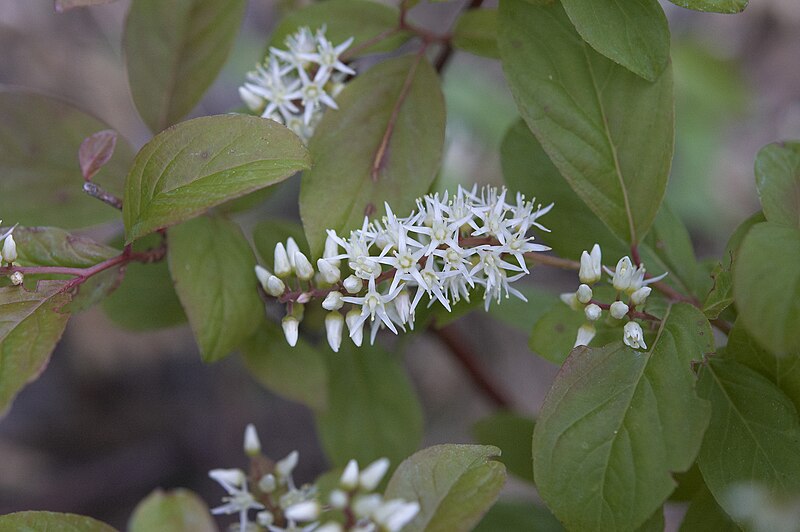
Virginia sweetspire can grow upwards of 6 feet tall and equally as wide. The most distinguishable feature of this attractive native shrub is the white elongated tassels of flowers abundantly present in late spring to early summer. It can be found in a range of habitats, from mountains to coastal plains.
This semi-evergreen shrub has gracefully arching branches and attracts pollinators and wildlife with its fragrant scent and edible fruit. On top of its beauty, it can be practically used as erosion control along wet banks
- Plant type: Shrub
- USDA Hardiness Zone: 5 to 9
- Sun: Full sun to partial shade
- Soil: Moist, rich, slightly acidic humus soils
- Duration: Deciduous
- Fragrance: A sweet smell that varies by plant
- Bloom time: April to June
- Water needs: Medium to wet
- Mature Height: 4-8 feet
- Potential Hazards: None. Repels deer.
- Maintenance Needs: Low
How to Choose the Best Native Plants for Your Landscape
If you’re overwhelmed by all the choices available, then here are some things to consider to narrow it down:
- Select the right plants for the site: Wet or dry (or swamp, something fitting in South Carolina), sun or shade (unless you select one of the native plants that will grow in both), sandy or loamy soil (though sandy soil is found throughout the state, there are communities that do not have it), Piedmont or coast.
- Check out the dangers: Some are toxic to you, others are toxic to animals (such as a dog you let romp).
- Acquire the plants properly. Get them from a nursery or garden center. If you dig them up on your own, you will eventually deplete the areas of the seeds they need to be self-sustaining. You should try to find a nursery that gets the seeds it uses to grow its stock from the stewards of sites that protect native plants.
Why Use Native Plants?
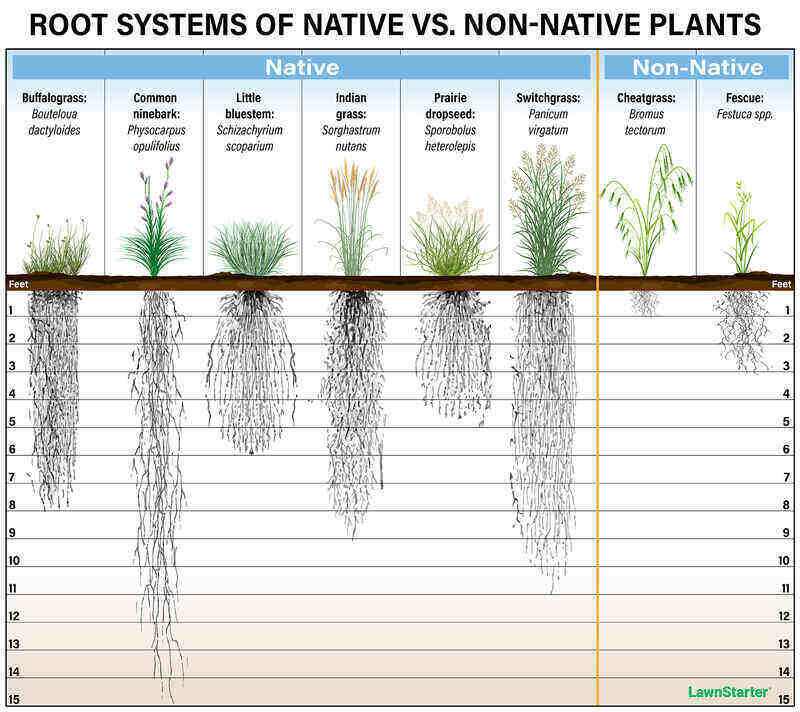
If you’re wondering why you should choose native plants, then remember that native plants offer a number of advantages:
- Some are hurricane-resistant and stand up to high winds and heavy rain better than the imported plants. From 1851 to 2023, South Carolina was hit with 44 tropical cyclones, four of which became major hurricanes.
- They are low maintenance: It is how they’ve survived on their own all these years.
- They adapted to South Carolina: Native plants have roots that grow well in sandy coastal soil (some reaching a depth of 16 feet), so they don’t need additional water.
- They resist South Carolina diseases: Native plant species survived by fighting off common South Carolina lawn diseases, including dollar spot, rust, gray leaf spot, powdery mildew, and anthracnose. Imported plants are often vulnerable to the fungal diseases that come with South Carolina’s moist climate.
- They limit soil erosion with their deep root systems.
- They improve water quality by filtering impurities before they make their way into creeks and rivers.
- They are friendly to pollinators, offering sustenance and a nesting place for butterflies, bees, birds, small mammals, and others.
- They offer pollen, seeds, and insects for wildlife in your ecosystem to consume, as any South Carolina native plant society will tell you.
- They do not require fertilizers: They developed without them.
- They need far fewer pesticides than lawn turf.
FAQ About Native Plants in South Carolina
Where Can I Purchase Native Plants?
Since gathering native plants from the wild is harmful to your local ecosystem, you should buy native plants from local nurseries in South Carolina.
What Should I Do to Start Installing Native Plants as a DIY Project?
If you decide you want to install native plants as a DIY project, you should:
- Find out about your soil. The wet lowlands have loamy, clay soils; the floodplains have sandy, loamy sediments; the coastal areas have sandy soil.
- Decide if you want to attract wildlife, then what wildlife (such as pollinators, including hummingbirds), then find the right native plants to meet those goals.
- Prepare the area. Remove existing vegetation.
- Spruce the soil. Add compost or peat moss; it helps young plants grow. Don’t fertilize; native plants don’t need it.
- Seeds or plants: Decide which is best for you. Plants cost more but establish sooner. Seeds can take a year or two longer.
- Plan to weed for a few seasons. There are several common lawn weeds in South Carolina to watch out for.
Why Should I Hire a Professional Landscaper?
Adding native plants to your yard may seem like a fun DIY project, but you may benefit from hiring a local landscaping professional because they will know:
- Where to properly acquire native plants: You don’t want to go into the wild and dig them up, nor do you want to acquire them from those who do. The National Wildlife Federation has called for these “crimes against nature” to stop.
- How to best place the native plants. Trial and error can be fun, but for a large enough project, you might want to get it right the first time. You want to be sure to grow an exciting mix of flower colors. You might want to attract pollinators and hummingbirds.
- How to mix them with wildflowers. Some native grasses will crowd out wildflowers and other native plants.
Hire a Pro
Landscaping with native plants can require commitment, time, and expertise that you don’t have. LawnStarter will connect you with South Carolina landscaping professionals in your area today. We have trusted lawn care pros in many cities across South Carolina, including Myrtle Beach, Columbia, Charleston, Greenville, and everywhere in between.
Main Image Credit: Carl Lewis / Flickr / CC BY 2.0